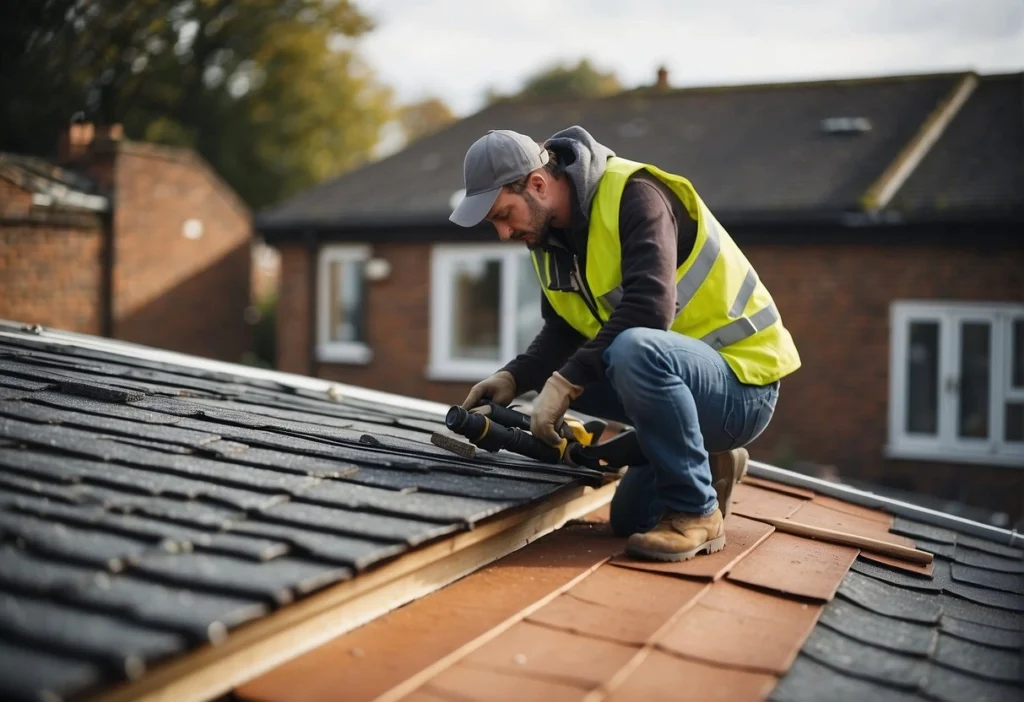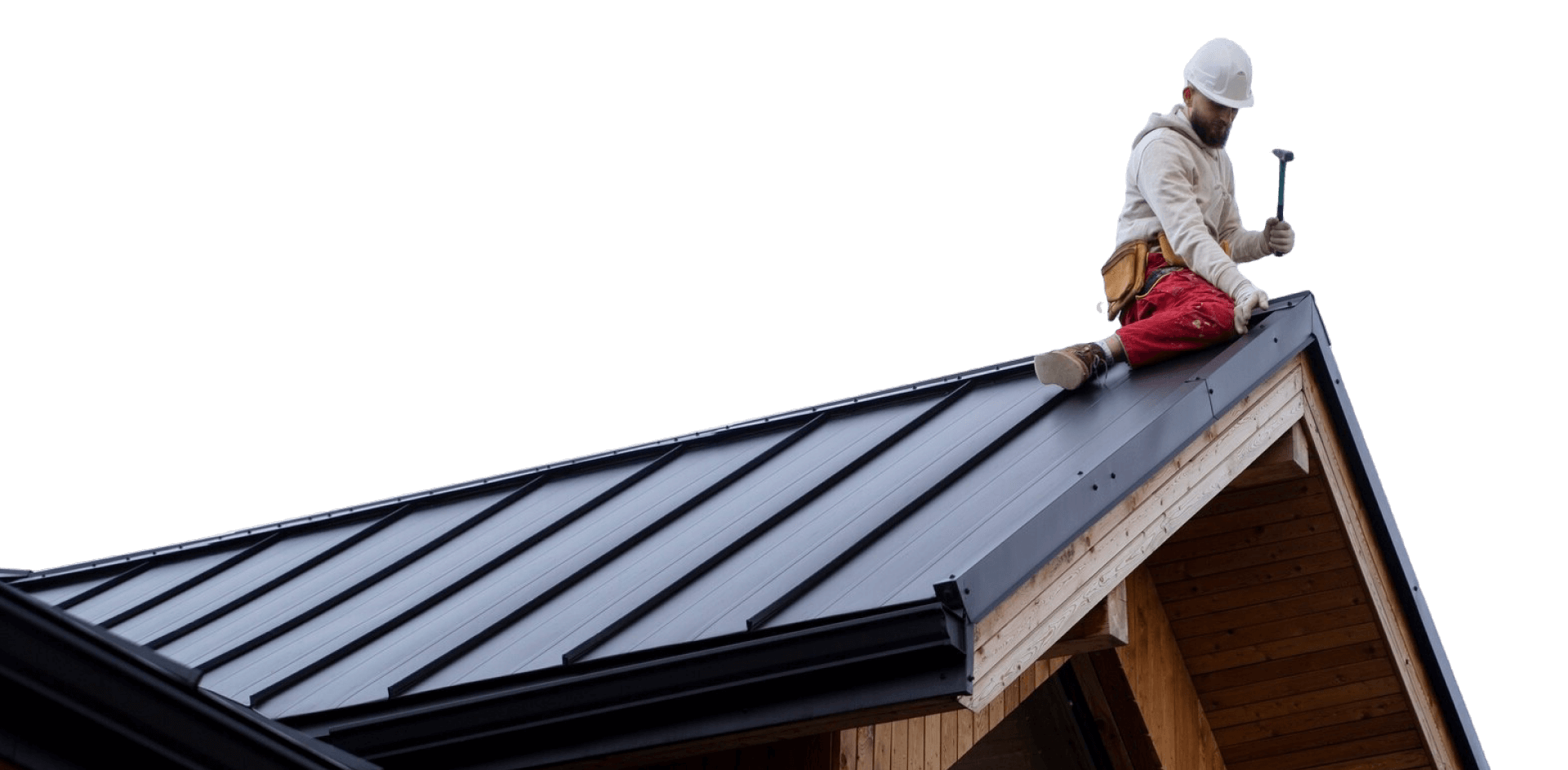Regular inspection and maintenance are essential to ensure the longevity and performance of flat roofs. Neglecting these tasks can lead to significant damage and costly repairs. So, how should you inspect a flat roof? Here’s a comprehensive guide to help you maintain your flat roof effectively.
How to Inspect a Flat Roof

Safety First
Prioritize safety before conducting any inspection. Use proper safety equipment, such as a sturdy ladder, non-slip footwear, and a safety harness if necessary. Avoid inspecting the roof during adverse weather conditions, such as rain or strong winds, as these can increase the risk of accidents. If the roof’s condition is severely compromised, it’s best to consult a professional to avoid potential hazards.
Remove Debris
Clearing the roof of debris is a critical first step. Leaves, branches, and other materials can block drainage systems and trap moisture, which can weaken the roofing material over time. Use a soft broom or blower to avoid damaging the roof’s surface while removing debris.
Check for Ponding Water
After a rainstorm, inspect the roof for areas where water pools or stagnates. Persistent ponding water can accelerate wear on roofing materials and lead to leaks or structural damage. If ponding is a recurring issue, consider consulting a roofing specialist to improve the drainage system or adjust the roof’s slope.
Inspect Membrane and Seams
Examine the roof’s membrane for signs of wear, such as cracks, blisters, or punctures. These issues can expose the underlying structure to moisture and weather damage. Additionally, closely inspect the seams for separation or weak spots, as these are common areas for water infiltration.
Examine Flashing and Penetrations
Flashing around vents, pipes, and other roof penetrations can deteriorate over time, leading to leaks. Check these areas for cracks, rust, or loose sections. Pay extra attention to the edges of the roof, as these are often vulnerable to wind and weather damage.
Assess Drainage Systems
Ensure that gutters, downspouts, and internal drains are free of blockages and functioning properly. Poor drainage can lead to water accumulation and increase the risk of leaks. Regular cleaning and maintenance of these systems are essential to the overall health of the roof.
What Maintenance is Required for a Flat Roof?
Regular Cleaning
Schedule routine cleaning to keep the roof free from debris. A clean roof prevents drainage issues and minimizes the risk of damage caused by trapped moisture. Use non-abrasive tools to protect the roof’s surface.
Sealant Application
Inspect areas around roof penetrations, seams, and flashing for signs of wear. Apply a high-quality sealant to reinforce these areas and prevent leaks. Regular reapplication is recommended, especially in regions with extreme weather conditions.
Roof Coating
Applying a reflective roof coating not only protects the roofing material from UV rays but also improves energy efficiency by reducing heat absorption. This can help lower cooling costs and extend the roof’s lifespan.
Addressing Repairs Promptly
Do not delay addressing any identified issues, no matter how minor they may seem. Small cracks or leaks can quickly escalate into significant damage, resulting in higher repair costs.
How to Inspect a Roof Yourself
- Visual Inspection
Conduct a preliminary inspection from the ground. Look for signs of sagging, unevenness, or visible damage, such as torn materials or missing components. Use binoculars if necessary to get a closer view of hard-to-see areas. - Interior Check
Inspect the building’s interior for water stains, discoloration, or damp spots on ceilings and upper walls. These are often indicators of roof leaks or water ingress that need immediate attention. - Access the Roof Safely
When accessing the roof, ensure your ladder is secure and on stable ground. Wear non-slip shoes and consider having a spotter to assist you. Move cautiously to avoid causing accidental damage to the roof’s surface. - Document Findings
Take detailed notes and photos of any issues you identify during the inspection. This documentation can be helpful for tracking changes over time or sharing with a professional for further evaluation.
How to Tell if a Flat Roof is Bad
- Visible Damage
Look for obvious signs such as cracks, blisters, or missing patches of roofing material. These issues can compromise the roof’s ability to protect against the elements. - Persistent Leaks
If water ingress occurs regularly despite previous repairs, it could indicate deeper structural issues or extensive damage to the roofing material. - Structural Issues
Check for sagging or uneven sections on the roof, which may signal weakened structural support. These problems should be addressed promptly to prevent collapse or further damage. - Aging
Flat roofs typically last 15-20 years, depending on the materials and maintenance. If your roof is approaching or exceeding this age, consider consulting a professional for an evaluation and potential replacement.
How to Pick a Roofing Professional to Replace or Restore Your Roof
- Research and Referrals
Ask friends, family, or neighbors for recommendations, and check online reviews for local contractors. A reputable roofing company will have positive testimonials and a strong track record. - Verify Credentials
Ensure the contractor is licensed, insured, and experienced in handling flat roofs. Certifications from recognized roofing organizations can also indicate expertise. - Request References
Ask for examples of past projects similar to yours. Contact previous clients to learn about their experiences with the contractor, including the quality of work and professionalism. - Obtain Multiple Quotes
Collect estimates from several contractors to compare costs, materials, and timelines. Be cautious of quotes that are significantly lower than others, as they may indicate subpar materials or workmanship. - Review Contracts Thoroughly
Before signing, read the contract carefully to ensure all work details, materials, timelines, and warranties are clearly outlined. Ask questions about anything unclear or ambiguous. - Communication
Choose a contractor who communicates openly and responds promptly to your questions. Clear communication is essential for a smooth and successful roofing project.
For residents in Coquitlam, Proper Roofing is your trusted partner for all flat roof repair and maintenance needs. With years of experience and a commitment to quality, we specialize in replacing old or damaged roofs with high-quality materials, ensuring a durable and long-lasting solution for your home or business.

Conclusion
Regular inspection and maintenance of your flat roof are crucial to prevent potential issues and extend its lifespan. By following the outlined steps, you can identify problems early and take appropriate action. However, some tasks require professional expertise.
Don’t wait for minor issues to become major problems. Contact Proper Roofing today to schedule a comprehensive roof inspection. Our team of experts is ready to provide top-notch Coquitlam roof repair services tailored to your needs. Protect your investment and ensure the safety of your property with our reliable and efficient roofing solutions. Reach out now for a free estimate and experience the peace of mind that comes with a well-maintained roof.
Check out our social media pages below:
Here are other related articles about roofing for you:
How to Repair a Metal Roof Leak


